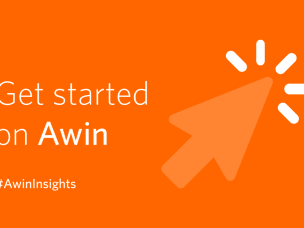Inbound vs. aggressive marketing
Written by Stephanie Salomon on 5 minute read
Acquiring new customers is the backbone of every business. As competition increases, attracting and securing these individuals becomes more challenging.

With so many choices, consumers now have the luxury of flipping between websites. Grabbing their attention has never been more important.
Many marketers have turned to a practice known as aggressive marketing (not to be confused with outbound marketing, which involves actively seeking out your prospects through paid channels), in hopes of capturing and compelling prospects to take action. These marketing techniques can take many forms, all of which aim to create an immediate impact.
Aggressive marketing is in opposition to more passive forms that aim to build relationships over time by strengthening brand awareness and offering prospects content and information they are seeking. These inbound methods develop trust gradually and are less forceful than aggressive techniques. The aim of inbound marketing is to satisfy an existing need so that when prospects find you, they are already seeking your solution... something achieved by improving visibility, driving traffic and gaining leads.
With that said, let’s look at the different methods involved with each approach.
Examples of inbound marketing
Inbound marketing techniques are geared to your prospects finding you easily, because they want what you offer.
- Content marketing: Your blog should be used to offer valuable information that potential prospects are looking for, rather than about what your company does or supplies. This builds trust by demonstrating you are prepared to help your prospects, rather than chase them for their money. The good news is it's thought this type of content marketing creates three times as many leads as more traditional marketing.
- Guest blogging: Having your article as accepted content for related websites is a great way to reach a completely new audience. If you can persuade influencers in your market to feature your articles, it also gives your brand approval from other well-known thought leaders. Additionally, it will build links to and from your website, which supports overall search engine optimization.
- Engaging with prospect and leads: Social media is a great way to connect with old and potential customers alike, while offering incentives to keep them coming back to your website. Plus, social media is a great forum to let your audience know of any new updates or activity with your business. The more followers read your posts and the more your posts appear in their news feeds, the more you stat top of mind. Check out our tips on growing reach on social media.
- Free resources: Giving something away - such as information, guides, e-books, checklists or coupons - is a great way to build trust while growing your list.
- Email marketing as part of your sales funnel: Keeping in contact with a prospect who has given you their email is essential for success. Use email marketing to stay connected and build trust, offer resources, and (of course) help subscribers buy your products when the time is right.
- Shareable content: Infographics and videos are examples of content easily shared. Make sure to include your branding and contact details on any type of shareable content so it's easy for prospects to find you.
- Keywords and SEO: The role of keywords has changed over the last few years, but they still play a part in the role of natural SEO. Focus on a few targeted keywords and ensure these are built into your content as organically as possible.
Examples of aggressive marketing
Aggressive marketing involves any immediate and forceful technique that prospects find hard to ignore. The aim is to persuade prospects to immediately click to find out more.
- Auto-play videos with sound
- Popups
- Large sticky banners
- Full-screen ads
- Ads disguised as part of the content
- Poor quality content surrounded by ads
- Flashing animations
- Multiple pages per article
- Shockvertising
- A barricade of emails
Pros and cons
So, which of these techniques is more effective? Let’s look at the pros and cons of both forms first.
Inbound marketing pros:
- Helps build trust and long-term relationships
- Non-forceful
- Aimed at offering solutions to existing problems
- Strengthens brand awareness and creditability
- Cost-effective
- Can have a snowball effect if content is shared or goes viral
Inbound marketing cons:
- Time consuming
- Labor intensive
- Results not immediate
- Challenging to track ROI
- Lots of competition in the market place
Aggressive marketing pros:
- Immediate
- Stands out in a competitive market place
Aggressive marketing cons:
- Prospects don’t like it
- Effectively advertises your competitor, as prospects turn to them instead
- Google dislikes it and won’t bump your website in rankings
- May breach regulations
- Shock tactics are outdated
The takeaway
Both techniques have pros and cons, and many businesses employ both approaches to some extent. However, problems arise when aggressive marketing tactics overtake inbound ones.
A study conducted by The Tuck School of Business in conjunction with New York University and the Wharton School of Business at the University of Pennsylvania demonstrated how more aggressive ads performed poorly compared to passive methods.
Affiliate marketing is aimed at providing prospects with something of value and connecting consumers with the right brands. Using your content or blog to promote your links is one of the most recognized forms of affiliate marketing... because it works.
Awin provides the tools for publishers to link and track your sales easily, leaving you free to work more on your inbound marketing methods, in addition to our lead generation service.
It’s clear to see why aggressive marketing doesn’t work as although prospects are generally looking to buy, they want to make their purchases on their own terms, not yours. Forcing them to consider your products without taking the time to build a relationship is a recipe for failure.
However, occasionally employing a strong call-to-action technique with a warm audience can help an indecisive buyer make up their mind.
Just make sure you never use deceptive marketing methods, or you will soon lose any relationship you have with them.



